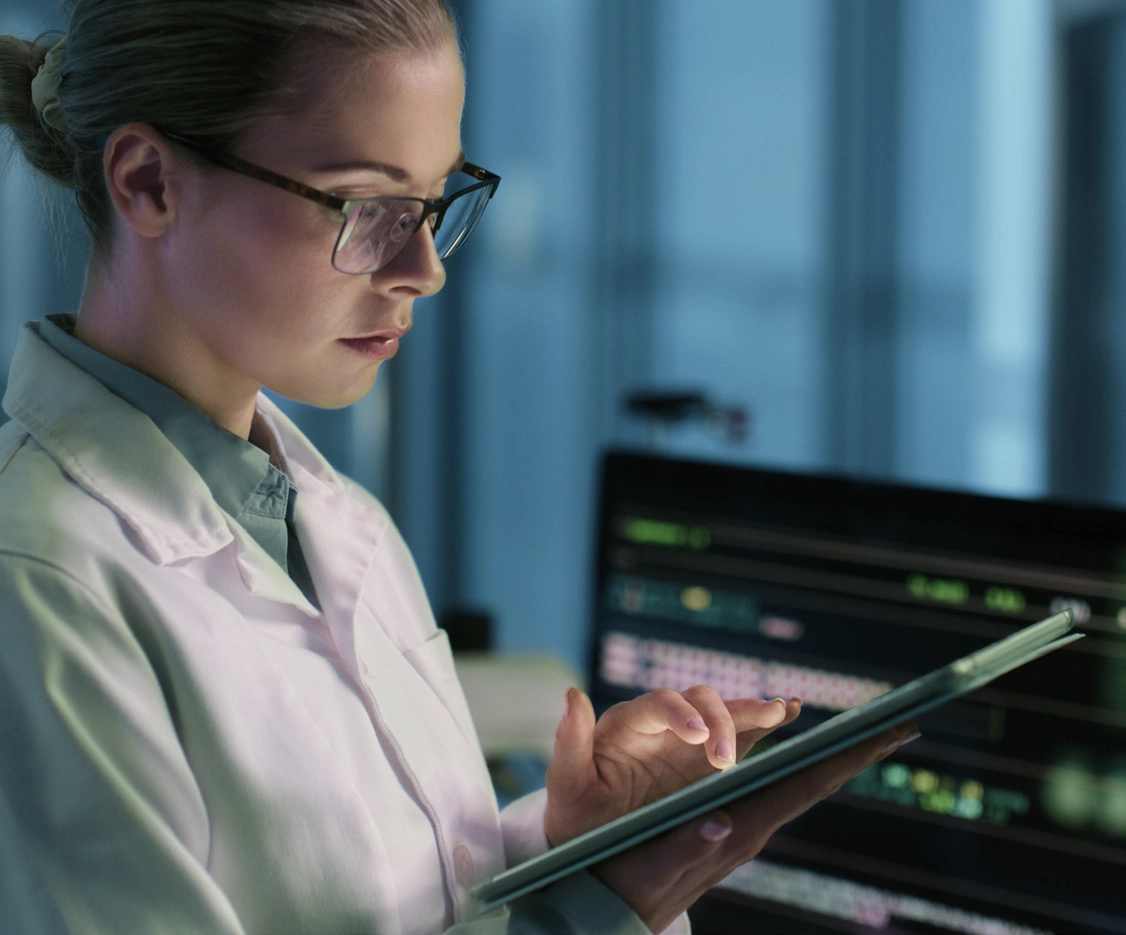Ensuring qPCR Safety and Compliance
 In a laboratory environment, safety and compliance are paramount, especially when dealing with advanced technologies like quantitative PCR (qPCR). qPCR is a powerful molecular biology tool used in diagnostics, research, and quality control, and it is crucial to ensure its use aligns with regulatory guidelines and safety best practices. This article provides an overview of how to maintain safety and compliance while using qPCR, discussing laboratory safety protocols, regulatory requirements, and best practices for safe handling and accurate results.
In a laboratory environment, safety and compliance are paramount, especially when dealing with advanced technologies like quantitative PCR (qPCR). qPCR is a powerful molecular biology tool used in diagnostics, research, and quality control, and it is crucial to ensure its use aligns with regulatory guidelines and safety best practices. This article provides an overview of how to maintain safety and compliance while using qPCR, discussing laboratory safety protocols, regulatory requirements, and best practices for safe handling and accurate results.
Understanding Regulatory Requirements
Ensuring compliance begins with understanding the regulatory framework that governs the use of qPCR in your specific field. Different industries may be subject to varying guidelines and standards, and it's important for laboratories to align with the appropriate regulations. Here are some key regulatory bodies and standards to consider:
Good Laboratory Practice (GLP): Laboratories should follow GLP to ensure reliability, integrity, and quality of results. GLP outlines procedures for sample handling, data recording, and equipment maintenance.
ISO Standards: Laboratories that provide services like pathogen detection should comply with ISO standards, such as ISO 17025 for testing and calibration or ISO 15189 for medical laboratories.
FDA Guidelines: For laboratories involved in diagnostic applications, compliance with FDA guidelines is necessary, especially if results are intended for patient treatment decisions.
Biosafety Regulations: Handling biological samples in qPCR may involve exposure to pathogens. Compliance with biosafety level (BSL) regulations helps mitigate risks, particularly when working with infectious agents.
Laboratory Safety Protocols for qPCR
Maintaining safety in a lab using qPCR involves a combination of equipment, personal practices, and environmental considerations. Below are essential safety protocols that help create a safe working environment:
Personal Protective Equipment (PPE): Always use PPE such as gloves, lab coats, and eye protection when handling samples and reagents. This helps prevent exposure to potentially hazardous materials.
Proper Sample Handling: qPCR often involves biological materials that can contain infectious agents. Proper labeling, storage, and disposal of samples are key steps to reduce contamination risks.
Decontamination Procedures: Regular decontamination of work surfaces, pipettes, and equipment helps to maintain a clean working environment and prevents cross-contamination of samples. It is also crucial to maintain DNAse and RNAse-free areas to ensure the integrity of nucleic acid samples and prevent degradation.
Safe Use of Reagents: Some qPCR reagents, such as those containing ethidium bromide or phenol, can be toxic. Ensure reagents are handled with care, following the safety data sheet (SDS) guidelines.
Ensuring Accuracy and Reliability
In addition to safety and compliance, maintaining the reliability of qPCR results is crucial. Inaccurate results not only affect research quality but can also have severe consequences in clinical diagnostics. Here are some best practices to ensure accuracy and reliability:
Calibration and Maintenance: Regular calibration and maintenance of qPCR instruments are crucial for accurate results. Instruments should be serviced in accordance with the manufacturer's recommendations to ensure they remain in optimal working condition.
Quality Control Samples: Running quality control (QC) samples alongside test samples helps to validate the accuracy of results. QC samples serve as a benchmark and indicate any deviations in instrument performance or reagent quality.
Proper Storage of Reagents: Reagents, such as DNA primers and probes, must be stored under recommended conditions to preserve their activity. Degraded reagents can lead to unreliable amplification and skewed data.
Standard Operating Procedures (SOPs): Developing and following SOPs ensures consistency in sample preparation, running the assay, and data analysis. SOPs help minimize variability and make results reproducible.
qPCR Training and Documentation
Compliance is not only about meeting regulations but also about ensuring that lab personnel are properly trained and that all activities are well-documented. Here are some important points to consider:
Personnel Training: Ensure that all lab personnel involved in qPCR are properly trained in equipment operation, reagent handling, and data analysis. Training should be regularly updated to stay current with new methods and regulations.
Documentation and Record Keeping: Proper documentation is vital for compliance. Record keeping of calibration, maintenance, sample handling, and test results ensures that labs can demonstrate compliance during audits or inspections.
Emergency Protocols: Train staff in emergency procedures, including handling reagent spills, equipment malfunctions, and exposure to hazardous materials. Clear emergency protocols help mitigate risks and maintain a safe laboratory environment.
Meeting Industry Standards for qPCR
To achieve full compliance, laboratories must align with industry-specific standards that relate to qPCR applications. These standards provide a framework that helps guarantee the reliability and reproducibility of data. Below are some of the industry-specific standards and how they apply:
Diagnostic Laboratories: Compliance with CLIA (Clinical Laboratory Improvement Amendments) standards is crucial for qPCR used in clinical diagnostics to ensure high standards of accuracy.
Food and Agriculture Testing: For labs that use qPCR for foodborne pathogen detection, compliance with ISO 22000 is important to ensure food safety and quality.
Environmental Testing: qPCR is also used for environmental monitoring, such as water quality testing. Laboratories must adhere to standards like EPA (Environmental Protection Agency) guidelines for environmental sampling and testing.
Conclusion
Ensuring safety and compliance when using qPCR is not just about meeting regulatory requirements—it is about maintaining a high-quality lab environment where accurate and reliable results are guaranteed. By understanding regulatory requirements, following strict laboratory safety protocols, and investing in staff training, labs can create an environment where qPCR is used safely and effectively. Compliance will not only improve your lab’s performance but also enhance the credibility of your results in the eyes of regulatory bodies and clients.










